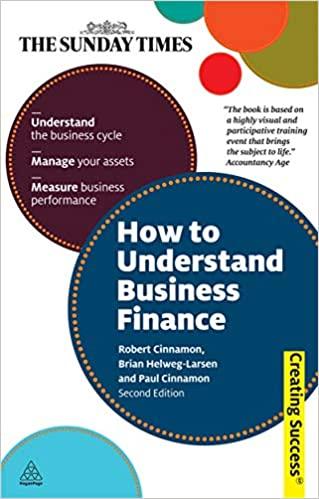Question
Compute the expected return on a portfolio in which you invest (U/2)%+60% of your wealth into a mutual fund (a company investing into a diversified
Compute the expected return on a portfolio in which you invest (U/2)%+60% of your wealth into a mutual fund (a company investing into a diversified portfolio consisting mostly of stocks) and 40%-(U/2)% into a money market fund; and also calculate the probability that the return will be negative (i.e., below 0%.). For example, for U=45, I invest (45/2)+60=82.5% into a risky mutual fund and 17.5% into a money market fund (and so I want to calculate the expected return and risk of loss on that investment portfolio). Also, compute the likelihood that the return on the portfolio will be greater than 30%.
(1)
U=7
Risky mutual fund = (7/2)%+60% = 63.5%
Market fund = 40%-(7/2)% = 36.5%
E(Rm) = 1/P/e + Expected Inflation,
where TIPS are Treasury Inflation Protected Securities that pay a fixed real rate of interest plus whatever future inflation is (use the 30-year TIPS and T-bonds from the Bloomberg website). Note that Treasury bond yields and TIPS yields are listed in percentages, and so 1/P/e in equation (1) above must be converted to a percentage by multiplying the inverse of the P/e ratio by 100
October 15th
where P/e is the price/earnings ratio of the S&P 500, and Expected Inflation is often estimated as
Expected Inflation = Treasury bond yield TIPS yield
Expected Inflation = 3.99% 1.69%
Expected Inflation = 2.30%
P/e ratio is 16.37, = 1/16.37 = 6.10%
E(Rm) = 1/P/e + Expected Inflation
E(Rm) = 6.10% + 2.30%
E(Rm) = 8.4%
The estimated return on money market funds tends to be equal to that on 3-month Treasury bills (that is shown on the Bloomberg website).
The expected return on wealth optimized for risk management is a weighted-average of the return on the T-bill and E(Rm).
For 3-month T-bill yield is 3.33% and E(Rm)=8.40%, then the expected return on a portfolio invested 36.5% into T-bills (and therefore 63.5% into the diversified mutual fund) would be
(.365x3.33%%)+(.635x8.40%)= 6.54%
(3) For purposes of evaluating risk, the standard deviation of the return on this portfolio may be estimated to be 15% times the percent of your wealth that you invest into the diversified mutual fund
Standard deviation of the return = 15% * .635 (risky mutual fund) = 9.525%
For a mutual fund that is diversified, the distribution of returns approximates a normal one, and so normal distribution functions/tables may be utilized to estimate how likely a return will be less than a specified level (for instance, there is an approximate 16%, chance that the return on a diversified portfolio will be more than 1 standard deviation below the expected return). As opposed to using normal distribution tables, you may use the NORMDIST function in excel.
If an investment portfolio had an expected return of 6.54% and a standard deviation of 9.525%, and if you wanted to find the likelihood of losing more than 3% of your wealth, the probability is
NORMDIST(-3,6.54,9.525,True) = 15.82%
Compute the likelihood that the return on the portfolio will be greater than 30%.
=NORMDIST(30,6.54,9.525,True) = 99.31%
=1-99.31%
= .69%
So, the probability that the return on the portfolio will be greater than 30% is .69%.
Question: Please write a paragraph summarizing the above findings. be as detailed as possible. thank you!
Step by Step Solution
There are 3 Steps involved in it
Step: 1

Get Instant Access to Expert-Tailored Solutions
See step-by-step solutions with expert insights and AI powered tools for academic success
Step: 2

Step: 3

Ace Your Homework with AI
Get the answers you need in no time with our AI-driven, step-by-step assistance
Get Started


